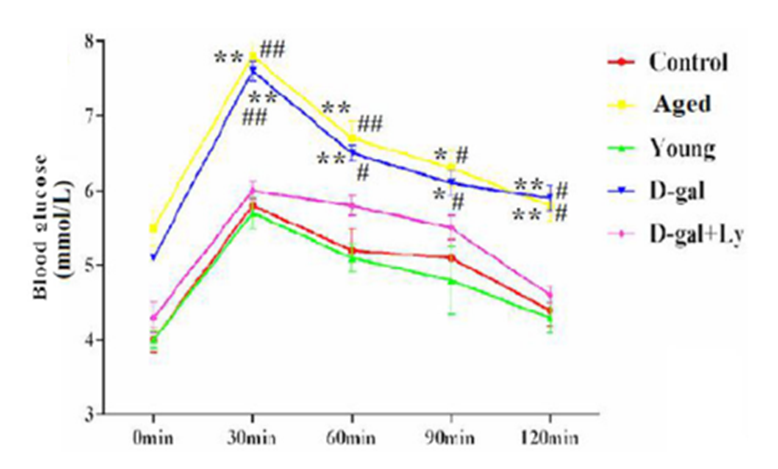Key Points:
- Supplementing aged rats with lycopene increases the growth of blood vessels in muscle.
- Blood vessel growth is induced by reduced insulin resistance — a primary cause of type 2 diabetes — allowing for improved glucose (energy) utilization.
- Blood vessel restoration is regulated by SIRT1, a guardian protein that plays a vital role in protecting our genetic blueprints (DNA).
The structural integrity of our organs and tissues inevitably crumble with aging. What’s more, our cells can no longer absorb as much glucose due to a lack of insulin (insulin resistance), leading to diminished blood vessel growth and insufficient blood flow, ultimately driving organ and tissue damage. This blood vessel aging can cause our arteries to malfunction, increasing the risk of developing deadly diseases like atherosclerosis and Alzheimer’s disease. Furthermore, insulin resistance can lead to another age-related disease, type 2 diabetes. Thus, researchers are exploring a myriad of ways to delay blood vessel aging.
Published in the Journal of Nutritional Chemistry, Wuhan University researchers investigated the protective effect of lycopene (Ly) on blood vessel health in rats modeling accelerated aging. They showed that Ly slowed blood vessel aging primarily by increasing blood vessel growth (capillary density), which is vital for efficient blood flow and oxygen delivery. Additionally, they showed that Ly improved glucose uptake and reduced insulin resistance, all of which contributed to the observed increase in blood vessels. Notably, the findings demonstrated that Ly exerts its protective effects via SIRT1 regulation, highlighting a potential mechanism connecting Ly and vascular aging.
Ly Restores Blood Sugar Levels
The formation of new blood vessels is highly dependent on the insulin signaling pathway, which plays a vital role in our muscles utilizing the glucose from our blood. The protein that facilitates glucose-transport into muscle is Glut4, so the Wuhan researchers examined whether Ly could increase Glut4 activity and stimulate glucose uptake into muscle. First, the investigators induced accelerated aging in 8-week-old rats by injecting them with a sugar called D-galactose (D-gal) for eight weeks. Then, D-gal rats were injected with Ly via the abdominal activity (IP-intraperitoneally).
Compared to untreated naturally aged rats (36-month-old) and D-gal rats, Ly-treated D-gal rats exhibited significantly greater Glut4 activity similar to young (4-week-old) rats. What’s more, Ly-treated rats had drastically lower blood glucose levels than untreated aged and D-gal rats, indicating that Ly promoted enhanced glucose uptake into muscle. Taken together, the findings suggest that Ly increases glucose utilization by increasing the glucose transport protein in muscle.

Ly Increases Muscle Blood Vessels by Activating Guardian Protein
Previous research has shown that increasing SIRT1 activity in the cells that cover the lining of blood vessels (endothelial cells) improves blood flow and increases blood vessel density. Therefore, the investigators examined whether Ly could increase SIRT1 activity to promote increased blood vessel growth and blood flow in D-galrats. Results showed that rats treated with Ly displayed greater blood flow and blood vessel density than untreated D-gal rats. Moreover, the elevated blood vessel density and blood flow were consistent with the observed increase in SIRT1 activity, indicating that Ly exerts its protective effect on vascular health through SIRT1 regulation.

Is Ly Only Good for Blood Vessel Health?
Although the study’s findings highlight Ly’s protective effect on blood vessel health, the implications of the study demonstrate Ly’s potential to improve exercise capacity, which further contributes to lower blood sugar. Furthermore, improving vascular function allows our muscles to acquire the necessary oxygen to perform adequately. Interestingly, the Wuhan researchers also showed that Ly supplementation restores muscle ATP – the cells energy currency – which implies that Ly supplementation could potentially improve muscle endurance by supplying our muscles with sufficient amounts of energy. However, obtaining a sufficient amount of Ly from natural dietary sources like tomatoes and watermelon is extremely difficult. That being said, Ly supplements are widely available on the market, so it may be worth trying Ly to delay vascular aging and improve muscle health.